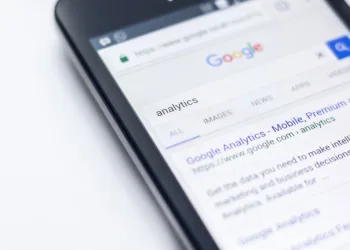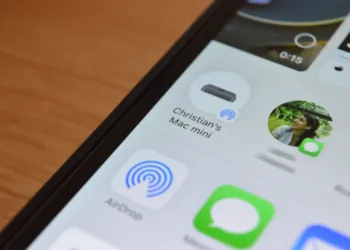The growth of the Internet and all the associated digital technologies has turned almost every element of human activity upside down.
This certainly applies to the way we plan, book and experience travel, airfare, visas and hotels. Travelers have gained access to a wealth of information and are largely responsible for their own holidays and trips.
Consumers orient themselves through various channels – both online and offline – and are strongly guided by the experiences of those around them and findings that other travelers share via review sites. The result of this is that travel organizations are no longer in the lead.
To focus on the customer and responding to their changing orientation process should, therefore, be at the top of the agenda of every travel organization. Driven by digital disruption from newcomers like Airbnb, the potential of new technology, and big data, the travel industry is at a major crossroads.
Travel evolves with the Internet
The evolution of the Internet can roughly be divided into three phases, each of which has had an impact on travel:
The web of everything: Data-driven personal assistants such as Siri, Virtual Reality demos and interactive experiences (smart room, lock, keys, etc).
Winner: unknown
Tactics: compete on experience and convenience
Web of information: the comparison and self-composition of travel with a focus on price differentiation.
Winner: Booking.com
Tactics: compete on price
Web or social: terms such as stay with locals, p2p holidays, social trust systems and reputation management determine the orientation and booking process here.
Winner: Airbnb
Tactics: compete on price and convenience
Technology has an impact on every stage of the journey
The travel retailer is one of the front-runners when it comes to applying technological trends and digital possibilities. Payment by smartphone and at the destination via the smartphone is provided with information about flight times and events in the area are just a few examples. Above all, the use of new technologies should contribute to creating a stress-free experience for the traveler.
The combination of social, mobile and the internet of things are changing that through door experience. Technology has an impact on all phases of the door2door experience: Prepping-To-Go, On-The-Way, On-The-Ground. In addition, over the next five years, there will be three major technology-driven trends.
Three future technology trends for the travel industry
1. Personal assistants: the new OTAs (Online Travel Agents)

The new OTAs are mobile personal assistants that assist and inform the customer throughout the customer journey. From food tips to real-time translations and indoor navigation. This fits in with an emerging trend called conversational commerce: assisting and selling via interfaces we are familiar with from messaging apps.
Facebook recently announced Facebook M, an app with which you can chat to, for example, get tips for a restaurant and make a reservation right away. The translation to travel is the Pana travel assistant that helps you put together your trip: from flights to booking hotels.
In the app you will also be linked to a personal assistant with a name, giving you the real feeling of having your own travel assistant. Travelers are also helped with flights, hotels, restaurants, and attractions near their destination. An all-round travel assistant like we were used to in the travel industry before the internet, only now with a new interface.
2. Virtual Reality (VR)

Of course, VR is not going to replace travel, but to make the experience for the journey much stronger through interactive features, for example when booking a holiday. The traveler can see a large number of examples in virtual reality so that he can see the sights, hear the sounds and even ‘touch’ the landscape from a wide range of travel experiences.
Think of a demo of the hotel or the nearby boulevard. In this way, the originally intangible travel product is made much more tangible.
In the Marriott Hotel’s VR demo, visitors are teleported to the New York skyline or virtually visit the hotel lobby.
3. Internet of Things (IoT) driven experiences:

The combination of wearables (identification straps like Nymi) and mobile apps will together be leading in the development towards ‘connected payment’. Via the Internet of Things, many touch-points for payments will be added, for example via NFC tags. The goal is clear: higher conversion optimization by making payments accessible and faster.
Furthermore, the IoT means a streamlined experience on location. Checking in and paying with a smartphone or wearable and closing your room that way. The first examples of this can already be seen on the Hong Kong peninsula. There, guests can use a tablet to control the light, curtains, temperature, and television, order dinner, make spa reservations and plan day trips. Another example comes from Disney.
Disney’s Magic Band is a multi-purpose wearable that visitors can use to pay in the park, unlock their hotel room, and serves as a FastPass for rides. All processes are frictionlessly reduced by the accessible use of a wristband. The core is that the power of wearables and the Internet of Things is only unlocked when it adds connectivity where previously this was not possible.
From systems of record to systems of engagement
A data-driven approach is the key to truly personalized experiences for travelers: from the search for a trip to the experience on location. Advanced data management platforms automatically deepen the vast amount of users’ personal data to instantly ensure that travel-related search results match a user’s individual needs and desires.
This involves integrating and analyzing data from all devices, systems, and channels to form a complete user profile and improving engagement such as conversion, purchasing and awareness by tracking customers across all their touch-points and reaching them in a relevant way.
Travel providers need to anticipate individual needs, travel plans and hospitality requirements based on online profiles and data. This is at the heart of the evolution from systems of record to systems of engagement.










